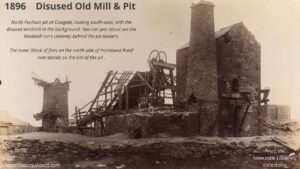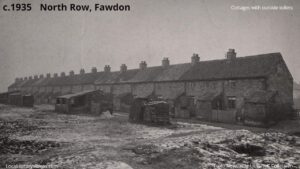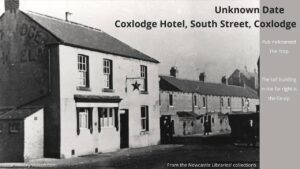Enjoy a glimpse of history through old images of Blaydon-on-Tyne, in North East England, UK.
Ten Drown Going Home, 1875
In 1875, many labourers finishing their day at work in Blaydon headed back home to Leamington by boat, despite the movement of the thawing ice on the Tyne. It was a deadly decision.
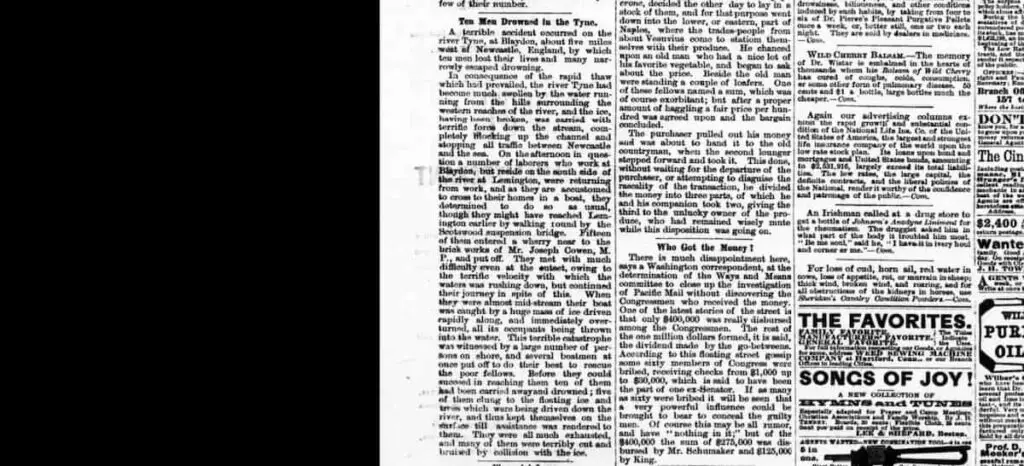
Performer Minnie Palmer, 1888
Minnie Palmer (March 31, 1857 – May 21, 1936) was an American actress in dramatic and musical plays.

Station Hotel
The photo of Blaydon’s Station Hotel, which was taken in 1890, is at the top of this page. The image is a sad reminder of the attractive buildings swept away with so much of old Blaydon’s history, in the name of progress.
Often known as Deuchar’s, referring to the family who ran the pub, the Station Hotel in Tyne Street was directly opposite Blaydon railway station.
At the time, the railway station was a little stone built station, dating back to 1835. It was replaced by a red brick, ornate columned station with glazed platform canopies in 1911. In 1966 the Beecham cuts almost closed Blaydon’s station altogether, but instead the station became unstaffed in 1969. By 1977 the railway station building was very derelict and had to be dismantled.
The ornate building you can see in the road behind the Station Hotel is the corner of the Blaydon Co-op on Church Street, often called The Store.
To appreciate some of the details in the photo, I’ve added two closeups. Can you see the men looking through the window at the camera?
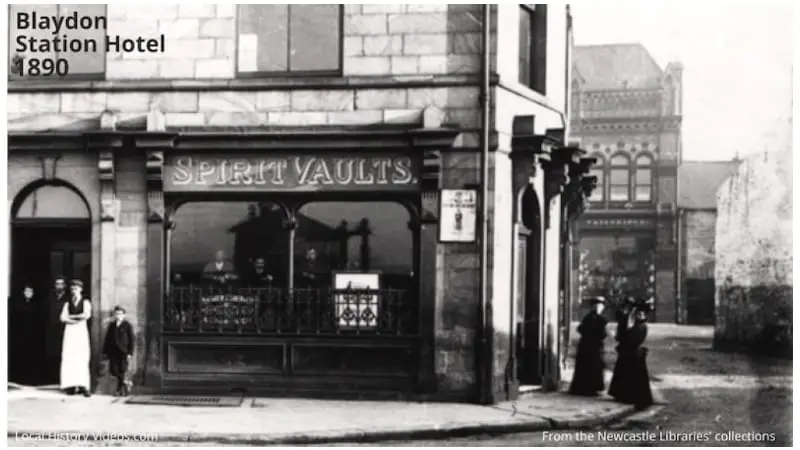
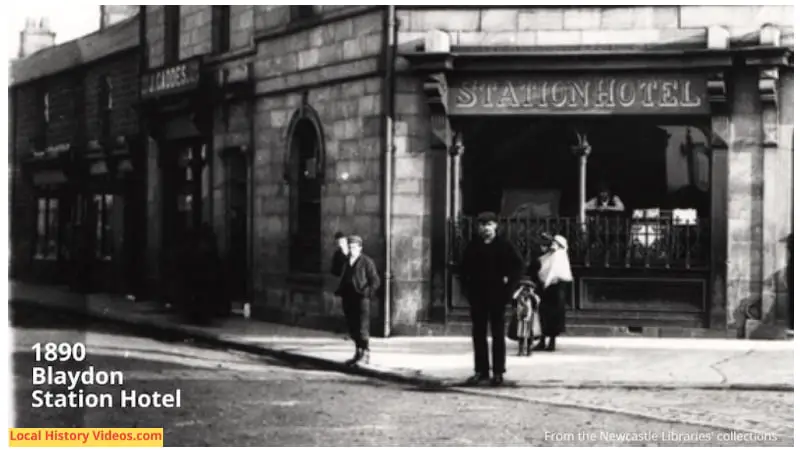
Church Street
Tyne Street used to run parallel to the river, with Garden Street and Church Street forming a triangular layout with their other ends meeting at Shibden Road.
In this first image of Church Street from the early 1890s, we see streets deserted except for horses and carts. Quite a few people are walking about. I’ve added three closeups too so you can see more details in each part of the photo.
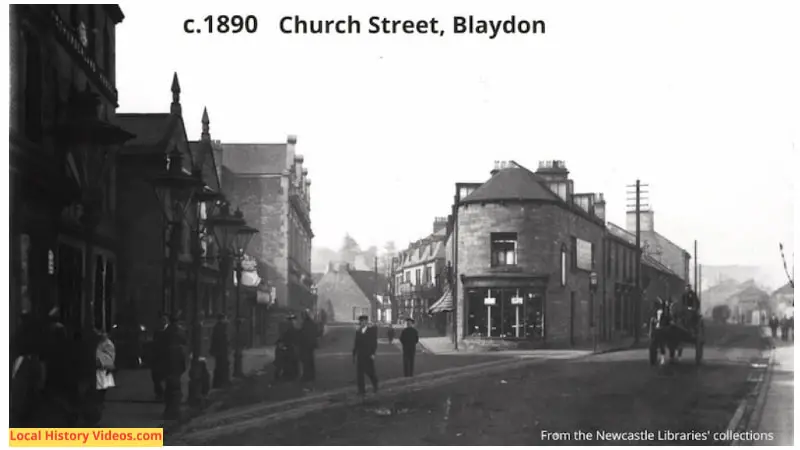
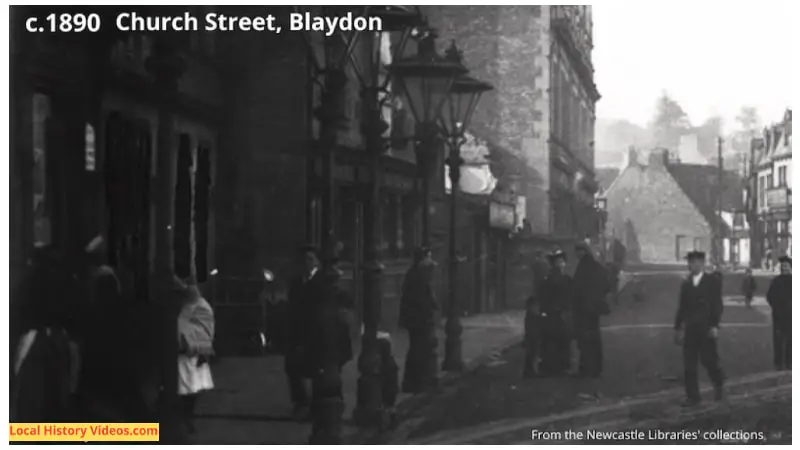
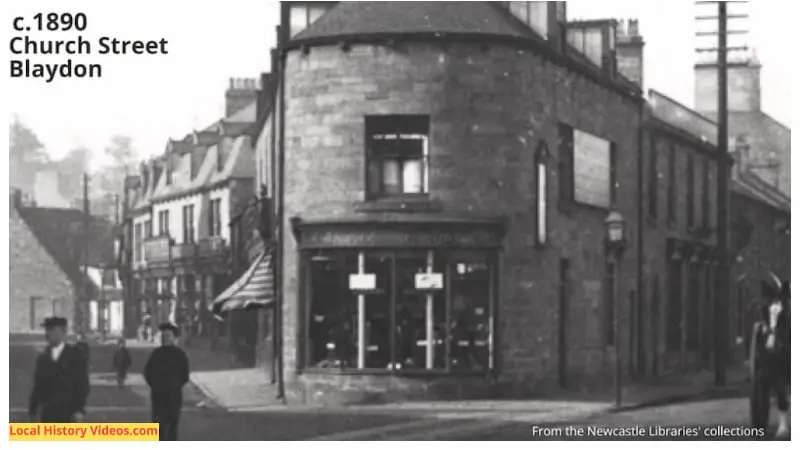
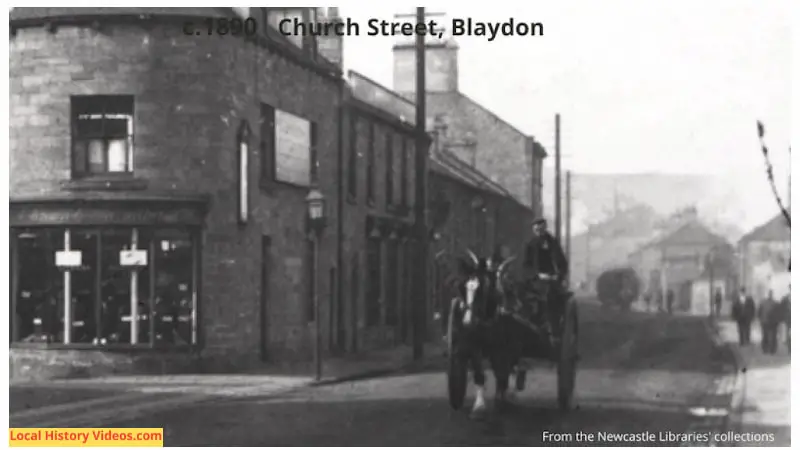
This second photo was also taken in Church Street in the early 1890s. We can see the A.Tyler & Sons store, next to the Bankrupt Stock store.
The tower of St Cuthbert’s Church, seen towering over the rooftops, managed to survive the town planners of the 1960s and 70s.
Again, because of the amount of detail in this image, I’ve added a couple of closeups.
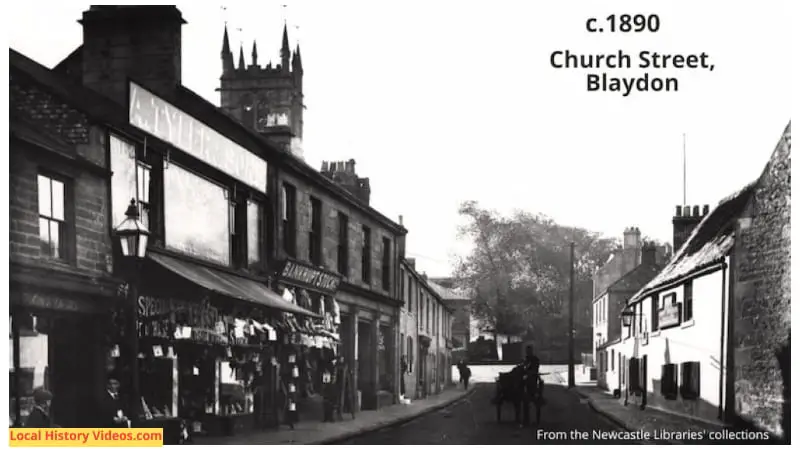


St Cuthbert’s Church
Built in 1845, St Cuthbert’s Church is one of the few buildings left from the demolition of the historic community, and has a Grade II listing to protect it for the future.
The street outside has certainly changed! The closeup of the Victorian era photo highlights some of the attractive materials and designs used when this church was built.
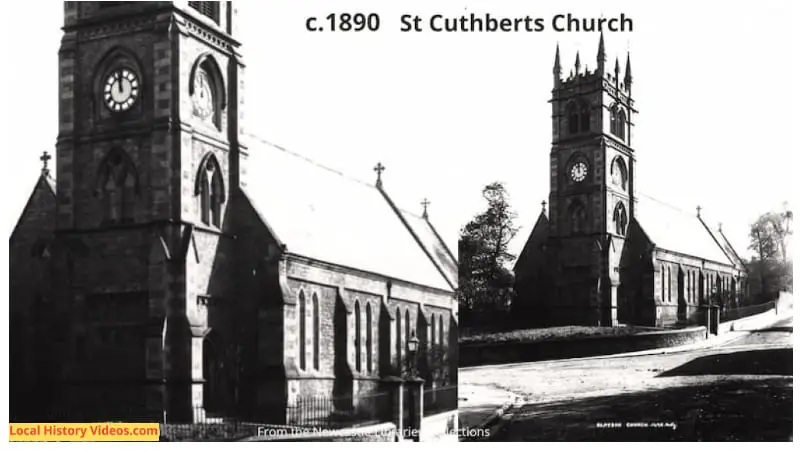
Blaydon Burn
Blaydon Burn’s open spaces and views not far from shopping and leisure facilities make it a pleasant place to live and walk. But during the Victorian era, it was a busy hive on industry.
This Victorian era photo of the Blaydon Burn Colliery Locomotive shows us just how different the area has become.

Joseph Cowan’s Guest, 1897

Garibaldi’s Head
The walls of Blaydon Library display several historic items, one of which is the head from a statue of Giuseppe Garibaldi, a reminder that this famous figure from history once visited the nearby (now demolished, of course) Stella Hall.
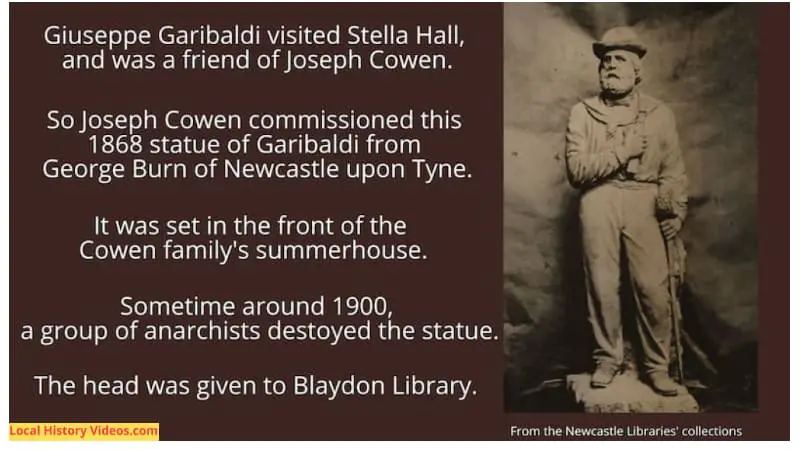
John Ramsey, 1917
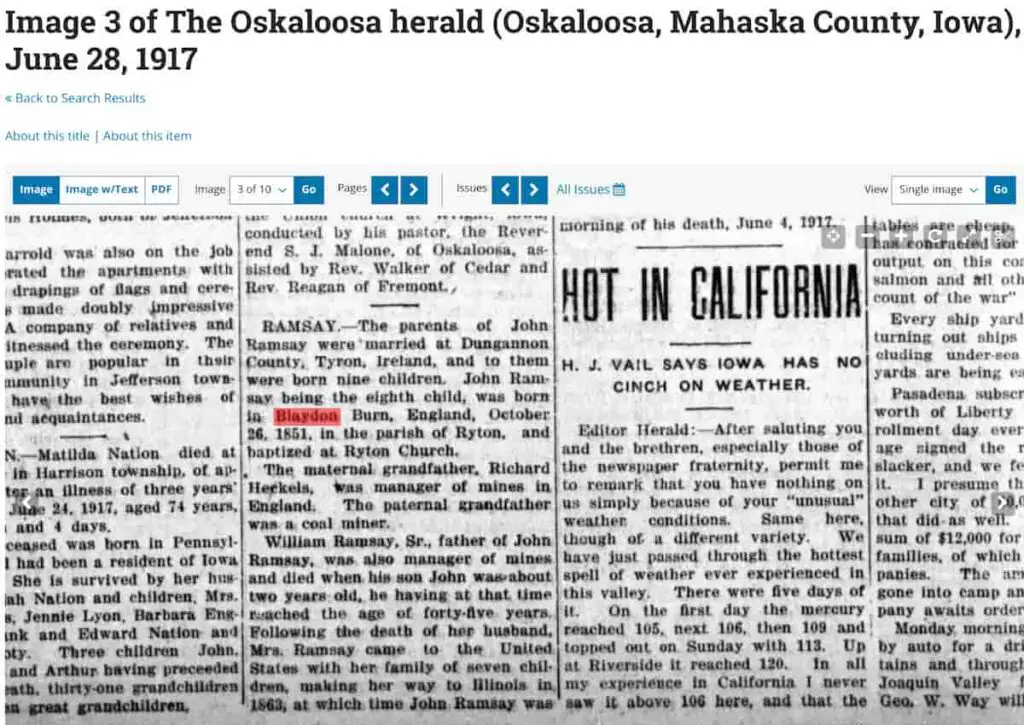
Orchestral Society
Although this photo – perhaps from the Edwardian era, given the hairstyles – is undated, it is accompanied by the names of the peope shown.
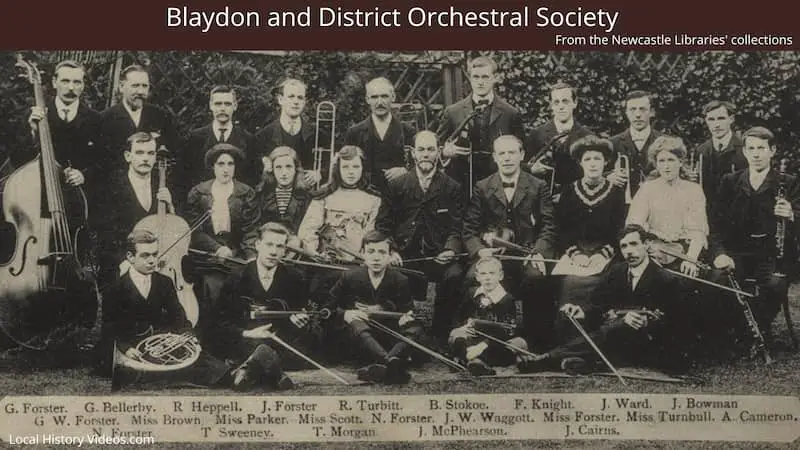
Blaydon Junior School
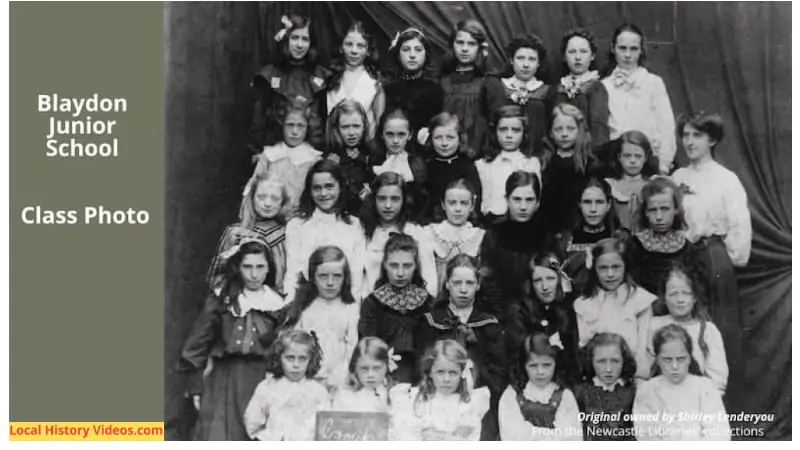
Wesley Place
Wesley Place, once located between Tyne Street and Church Street, is another location to have disappeared under the modern roads and shopping centre. But between 1856 and 1893, it was home to the Methodists’ Chapel.
Before that, the congregation met at 11 Bridge Street, the home of William and Mary Hawdon. The property had just a kitchen downstairs, and an upstairs room accessed by a ladder, so the preacher stood on a stool underneath the trapdoor, speaking to both levels at once!
Then there had been a moved to a bigger room in ‘Horsecrofts’, before the chapel in Wesley Place was built.
In 1893, the congregation moved to a 400 seat chapel and school in Shibden Road, eventually renamed as St. John’s. (That site is now the access road to the lower car park of Blaydon Shopping Precinct, next to the Blaydon Council Offices which have been converted into flats with a blue painted exterior).
Meanwhile, Wesley Place continued to thrive with a mixture of shops, homes, and the Blaydon-on-Tyne Post Office.
In addition to the 1920 photo, I’ve added a couple of closeups so you can see more detail.
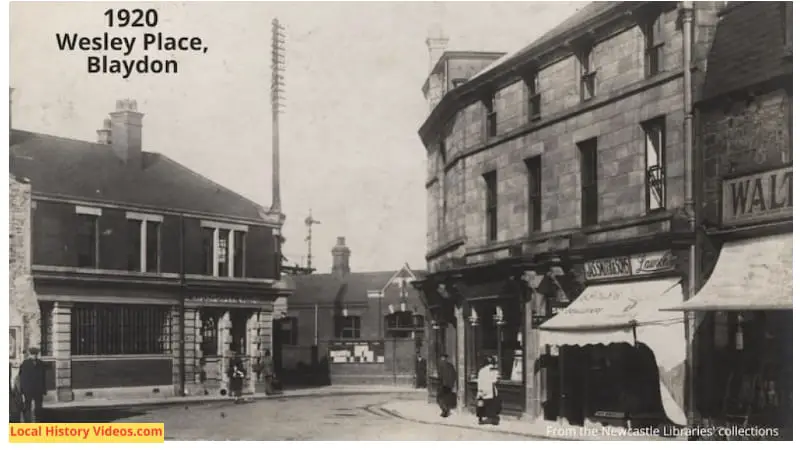


Path Head Cottage
The windows on this thatched cottage seem to open sideways.
It’s a shame the woman stood in the shadows of the doorway.
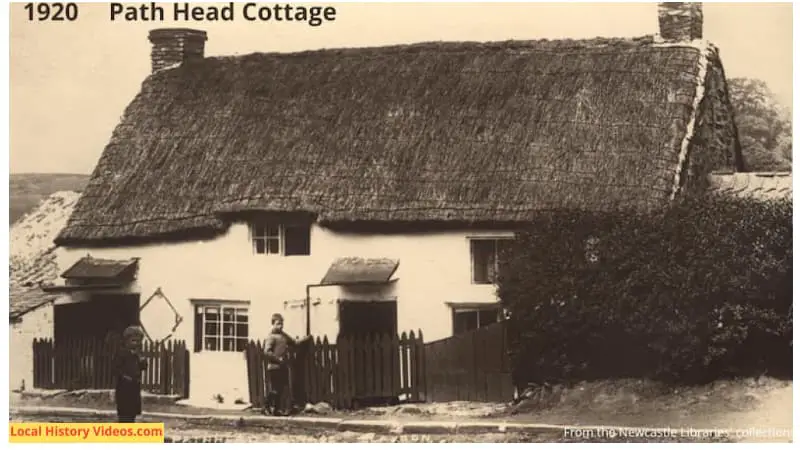
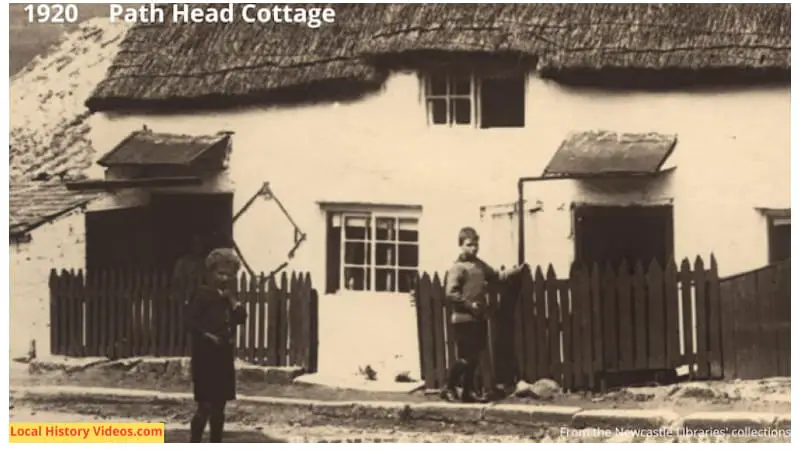
The Shipwreck Casualty, 1922

Blaydon Secondary School
Blaydon Secondary School was founded by local councillor the Reverend Alfred Barrett Tebb, in October 1912.
A plaque dedicated to him was placed at the Blaydon Leisure and Primary Care Centre, which now occupies this site.
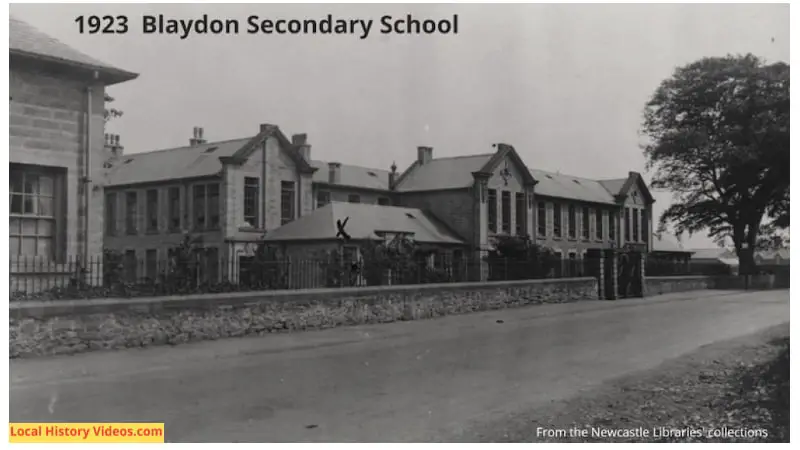
Blaydon Manure Company
The Blaydon Manure and Alkali Company was a chemical works, producing potash, soda and phosphorus from horse and cow manure.
They were based in an area by the river known as the Blaydon Spike, which apparently got its name from spiking, or plugging up the vents, of Russian guns captured in the Crimean War of the 1850s.
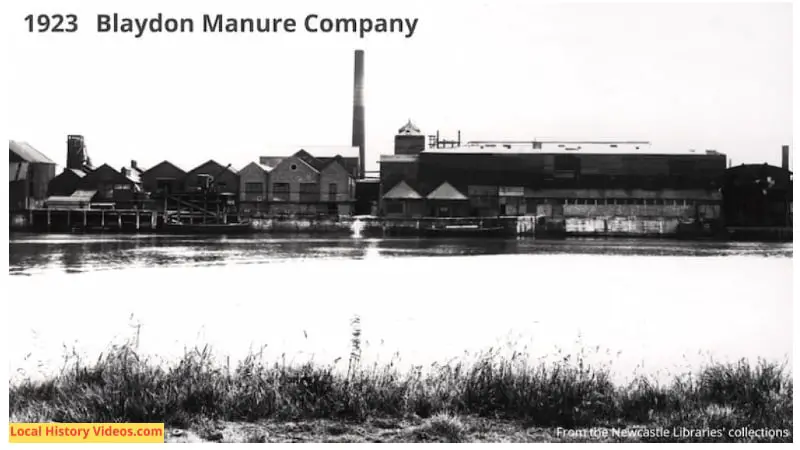
Empire Day 1927
This is a short, silent film, showing Blaydon’s parade, speeches and gathering, celebrating Empire Day in 1927.
1927 Empire Day in Blaydon (1927) – British Pathé on YouTube
Councillor Effigies Burned, 1927

Blaydon War Memorial
The Blaydon War Memorial was unveiled by Miss Cowen on 7th April 1923, with dedication by the Rev. E.V. Simpkinson, Rector of Stella St.Cuthbert’s.
The 17 foot high memorial listed 201 local men who died in the First World War, but local victims of the Second World War were also later added.
The Grade II listed memorial is found outside the cemetary on Shibdon Road.
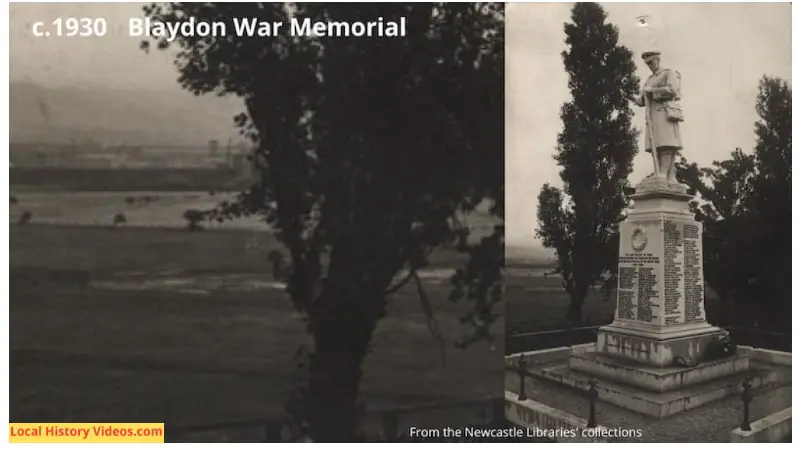
Faulty Clock, 1934

Blaydon’s Barking Dogs, 1949

Power Station
The Stella South power station down by the River Tyne was demolished on 29th October 1995. It was a coal fired power station, as was its twin on the northern bank of the Tyne at Stella North power station.
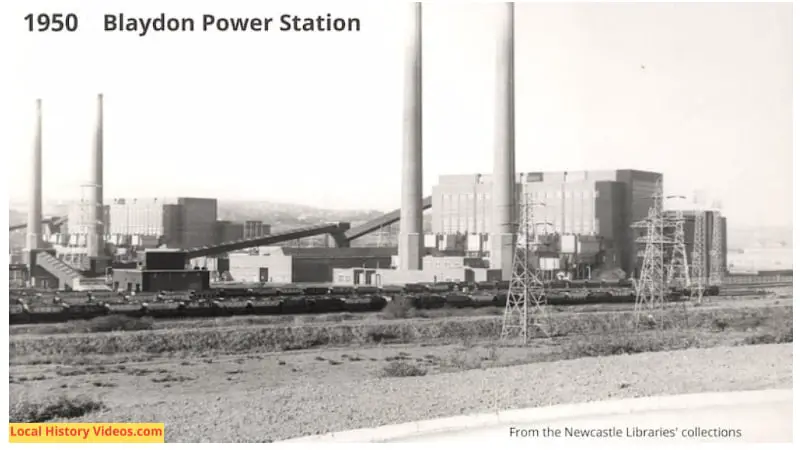
The £3,000 MP, 1950

Chimney Lift, 1955

Mr Attlee’s Visit, 1955

Automation Factory
“One of the most revolutionary advances in Britain’s machine tool industry was demonstrated at Blaydon-on-Tyne, near Newcastle”.
This newsreel from 1958 shows the inside of a Blaydon factory. You might know one of the workers shown, or like to see a local factory at a time it could draw motor manuafacturers from across Britain, Europe, and America. With the irony being that the development was designed to reduce staffing levels in factories.
Automation Gears Up (1958) – British Pathé on YouTube
Blaydon Races 1962
The centenary of the Blaydon Races in 1962 was a big affair, and this newsreel covered it nicely, even if the posh narrator’s Geordie accent makes you wince!
There’s a wonderful view of the old Chain Bridge as the procession crosses over it.
BLAYDON RACES – British Movietone on YouTube
Illegal Wedding Day Pint, 1962

Complete Destruction!
A collection of photos and cine film shows Blaydon’s historic streets and buildings before and during its phase of complete destruction.
Includes images from 2014 to show the road system (and shopping centre beyond) for which the heart of the community was flushed away.
The demolition about1973 of Blaydon, a town north east of England – Frank Gillings on YouTube.
A1 Blaydon Bridge
To see images of the historic Chain Bridge and building of the 1960s bridge which replaced it, you may like to see the Scotswood Bridge page on this site.
In 1990, Queen Elizabeth II came to officially open the A1 bridge across the Tyne between Blaydon and the West End of Newcastle.
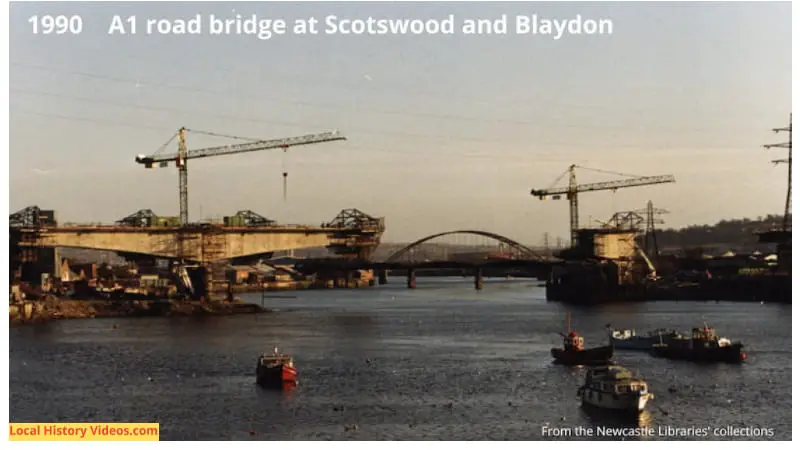
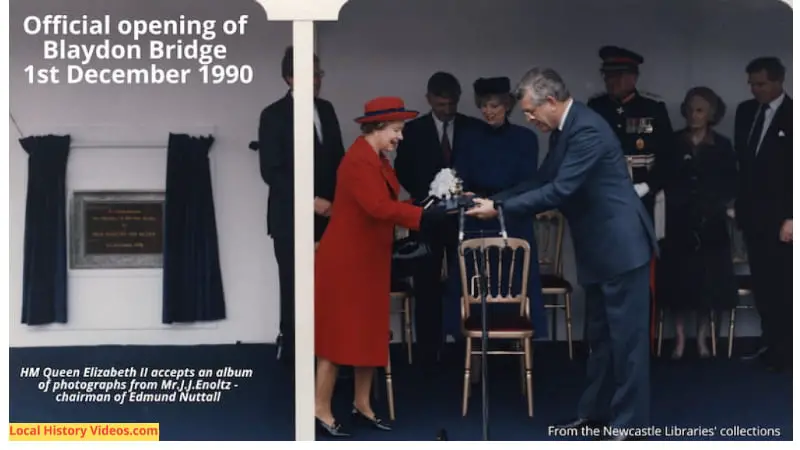
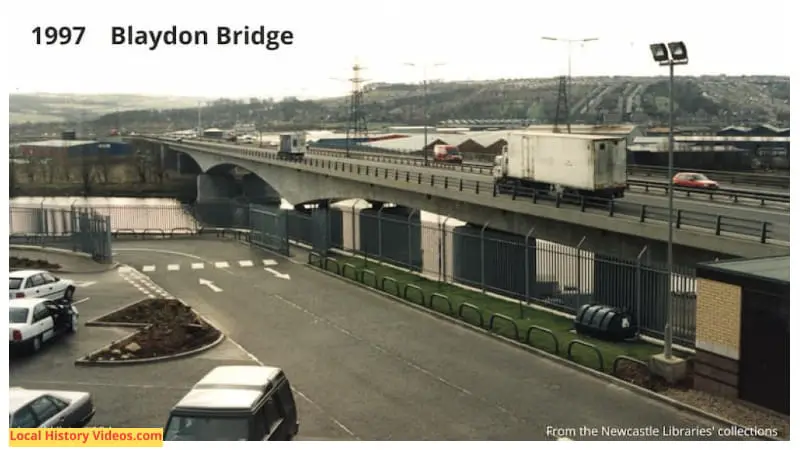
The Post Office Directory of Durham and Northumberland
by Kelly and Company
Published in 1879

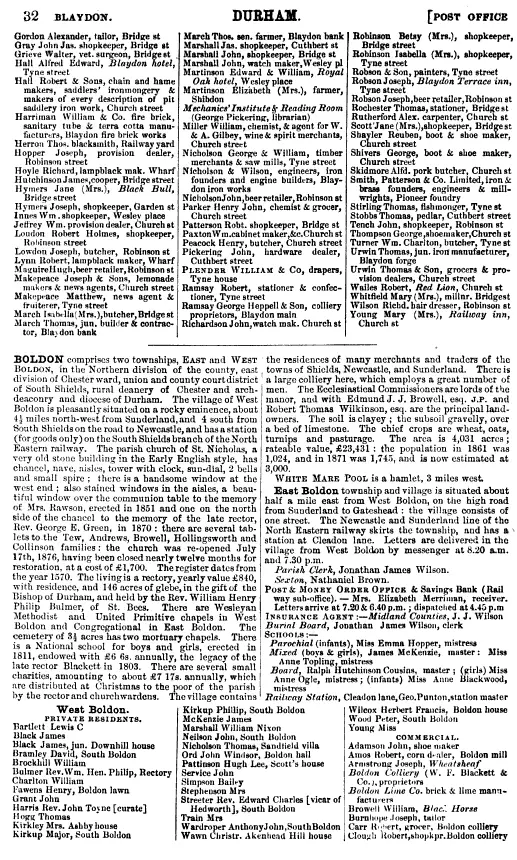
You might also like to see the page of old images of Winlaton
More about Tyne & Wear
- Cowgate, Newcastle Upon Tyne: History in Old ImagesEnjoy a glimpse of history through old images of Cowgate, in Newcastle upon Tyne, Tyne & Wear, England, UK.
- Willington, North TynesideEnjoy a glimpse of history about Willington in North Tyneside, Tyne & Wear, North East England, UK.
- Newburn, Newcastle upon TyneEnjoy a glimpse of history about Newburn in Newcastle upon Tyne, Tyne & Wear, North East England, UK.
- Howdon, North TynesideEnjoy a glimpse of history about Howdon in North Tyneside, Tyne & Wear, North East England, UK.
- Fawdon, Newcastle upon TyneEnjoy a glimpse of history about Fawdon in Newcastle upon Tyne, Tyne & Wear, North East England, UK.
- Coxlodge, Newcastle upon TyneEnjoy a glimpse of history about Coxlodge in Newcastle upon Tyne, Tyne & Wear, North East England, UK.
- Earsdon, North TynesideEnjoy a glimpse of history about Earsdon in North Tyneside, Tyne & Wear, North East England, UK.
- Dinnington, Newcastle upon TyneEnjoy a glimpse of history about Dinnington in Newcastle upon Tyne, Tyne & Wear, North East England, UK.
- Chirton, North East EnglandEnjoy a glimpse of history about Chirton in North Shields, Tyne & Wear, North East England, UK.
- Usworth, Tyne & WearEnjoy a glimpse of history about Usworth in Washington, Tyne & Wear, England, UK.


